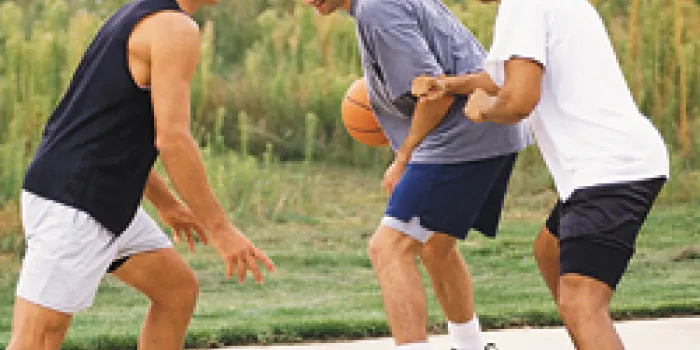Whether you are running a 10K race or simply walking the links at your local golf course, it is important to wear a good pair of shoes or inserts. After all, every step you take puts a little more wear and tear on your feet and ankles. That can quickly add up to a lot of pain and discomfort, especially if you have a bleeding disorder. Wearing proper footwear, however, can reduce the risk of ankle bleeds and arthritic pain, and that means you can stay active and on your feet.
“Being active and healthy is harder to do with bad feet,” says Ruth Mulvany, RPT, of the Department of Physical Therapy at the University of Tennessee in Memphis. Mulvany was awarded a National Hemophilia Foundation Physical Therapy Excellence Fellowship for her study of rocker-bottom shoes and their effect on the comfort and gait of people with hemophilic ankle arthropathy, a painful degenerative condition caused by recurring bleeds. “Studies have shown that 6,000 to 10,000 steps a day are recommended for good health,” she says. “But when your feet hurt, taking even one step is discouraging.”
John McNeil, who has severe hemophilia A, takes footwear seriously. That’s why he wears high-top sneakers, which provide both ankle support and stability whenever he’s on the basketball court.
“I have arthritic ankles,” says McNeil, 28, of Charlottesville, Virginia. “If I do something active in the wrong shoes, it hurts the next day.”
That kind of pain and discomfort can begin a vicious cycle, says Nicole Hroma, PT, the senior physical therapist at the Comprehensive Hemophilia and Thrombophilia Program of Children’s Memorial Hospital in Chicago.
“If you hurt your ankle and get a bleed, then you will rest it so that it doesn’t bear weight,” Hroma says. “But when you do that, your muscles tighten. That can cause you to lose range of motion and make you more susceptible to future bleeds.”
To find the right footwear, Mulvany recommends shopping at a shoe store rather than online. While the Internet may be convenient, you need to try on a shoe before you buy it. Look for shoes with good cushioning, arch support and plenty of wiggle room for your toes, says Mulvany.
“People with bleeding disorders who have foot and ankle problems do better with sturdy, laced-up, high-top shoes that support the arch and the ankle,” Mulvany says. “Those who have limited ankle motion often report that they do best if the shoe has a bit of a heel, like a cowboy boot would have. This puts the foot in a position that supports their limited motion.”
When McNeil needs shoe advice, he turns to his physical therapist. This is a good idea for anyone with a bleeding disorder. Consult with your physical therapist, podiatrist or orthopedist before buying your next pair of shoes. Such experts can identify problems and provide recommendations while steering you away from styles that could do your feet more harm than good.
Custom-made inserts for people with bleeding disorders keep the foot in place and properly aligned. That, says Hroma, helps to prevent bleeds. An added advantage is that they fit inside most dress shoes, which often lack support. For a study that gathered data from 1999 to 2006, Hroma and her colleagues recruited 60 children who were patients at Children’s Memorial Hospital’s HTC. Half of the children wore inserts, while the other half did not. Hroma and colleagues presented the study at the World Federation of Hemophilia Congress in Istanbul, Turkey, in June 2008.
“We had clear results—the kids wearing the inserts averaged about seven bleeds in seven years,” Hroma says. “The other kids averaged 30 bleeds.”
Some insurance plans cover custom-made inserts and orthoses when prescribed by a certified orthopedist. Check with your insurance provider before going to the orthopedist to see what your options are. But don’t overlook the inserts you can buy at your local shoe store, say Hroma and Mulvany.
“Sometimes, inexpensive, commercially available shoe inserts can make a huge difference in comfort and function,” Mulvany says. Again, check with your physical therapist or podiatrist to learn what’s right for you.
Don’t wait to determine what fits your needs best. If you have problems with your feet or ankles, early and aggressive intervention is essential so that you don’t lose your stride.
“You need to take care of your feet and ankles early,” Hroma says.

